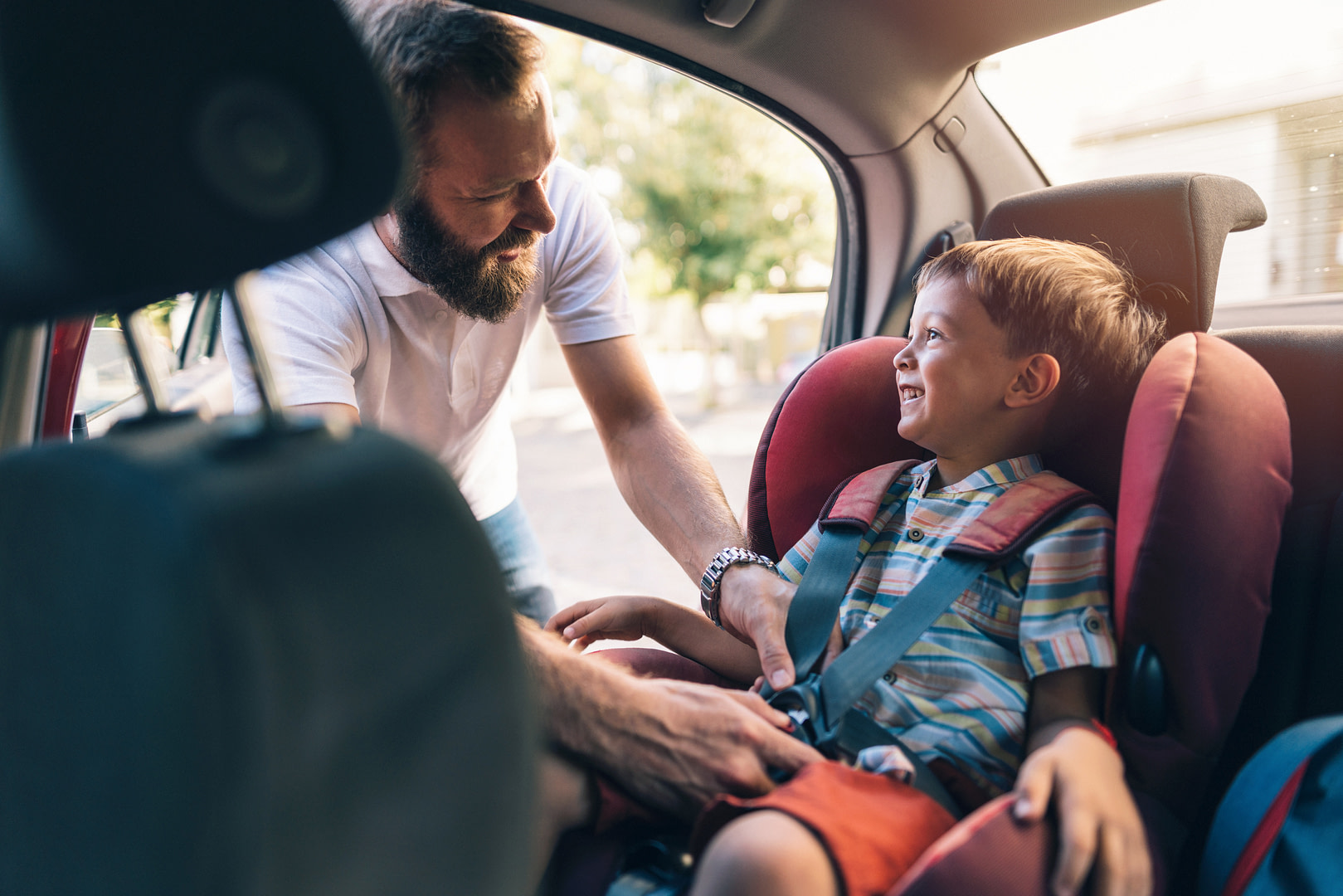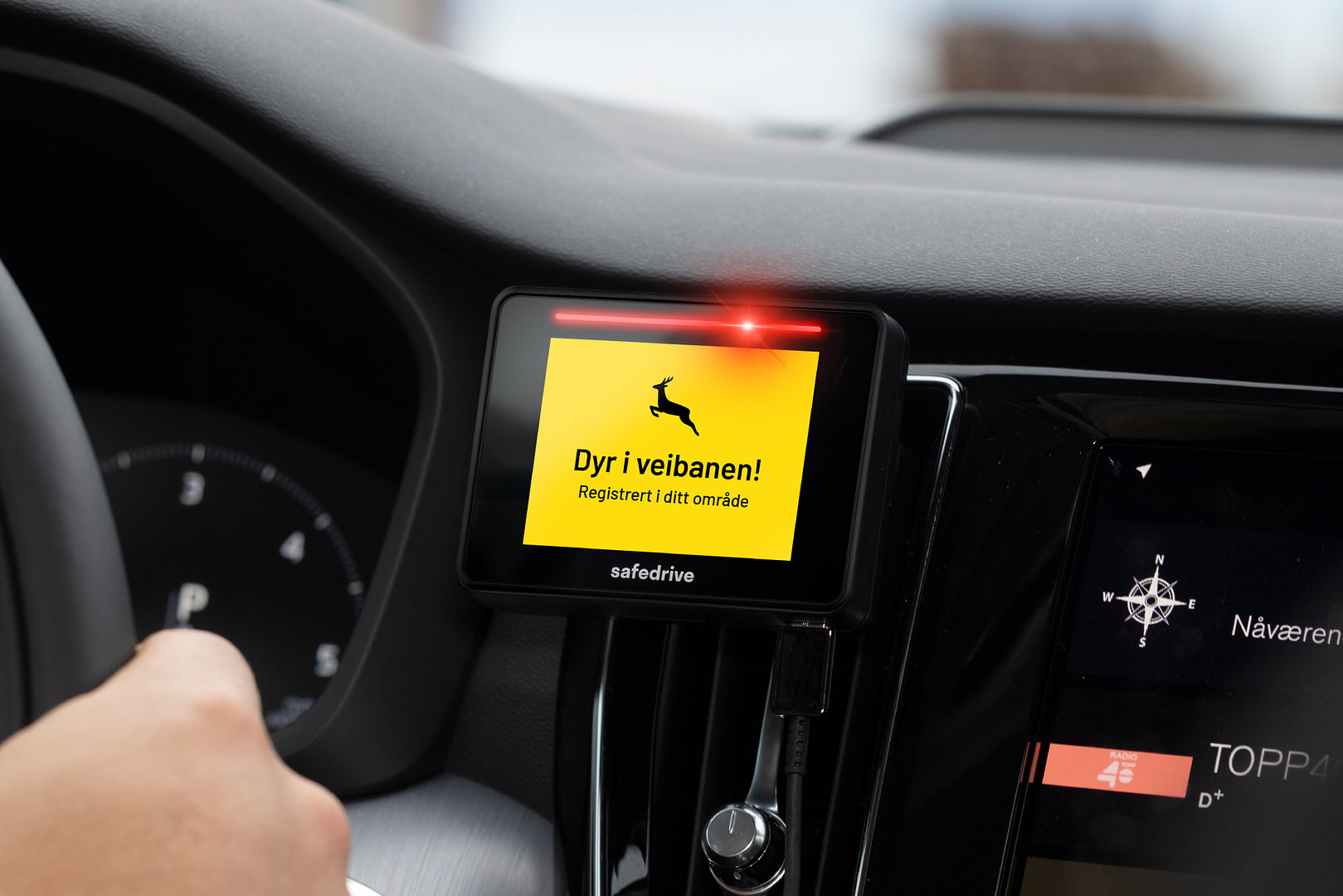For a long time, regulations regarding children and cars were non-existent, but fortunately there has been a significant development. Today, there are strict requirements for securing children in cars, and child seats must meet a number of criteria to gain approval.

Today's parents benefit from years of child safety equipment development.
Mass production of cars began in the late 1800s, but it would take many years before passenger safety became an concern. Open cars were common until the 1920s, leaving both children and adults very exposed. Seat belts and dedicated child seats were distant developments.
As new car models entered the market, the development of dedicated seats for children began. However, the first car seats were not designed with safety in mind. In 1933, the Bunny Bear Company introduced a child seat whose primary purpose was to keep the child sitting still. The seat stood on top of the car's seats and was not securely attached. In the 1940s, a child seat was created with a metal frame that hooked onto the front seat of the car, providing the child with a better view through the windshield. At least at that time, there were no airbag sthat could be deployed in a crash.
The first seats designed with children's safety in mind entered the market in 1962. Englishman Jean Ames created a rear-facing seat with a seat belt similar to the one we have today. American Len Rivkin created a forward-facing seat with a strap that went up between the child's legs to a metal hoop in front of the seat.
In 1968, car manufacturers began developing car seats designed to protect children. Ford developed a seat called Tot-Guard, which had a kind of shield and was attached to the seat belt in the car. General Motor developed the Love Seat, which was a rear-facing option. In the 1970s, the "Bobby Mac" seat entered the market. Because as it could be used in both rear-facing and forward-facing positions, it would adapt to the child's growth.
As child seats evolved, governments began to set requirements for securing children in cars. The first federal standards in the US in 1971 required a three-point belt to secure the child seat to the car seat. That same year, all new cars were required to have seat belts, initially applicable to the front seat only. From the 1980s, crash testing of child seats became mandatory in the US, and car seats gradually became more powerful and safer.

In 1997, an international standard, Isofix, was introduced for attachment points for child seats in cars. Isofix attachments allow the seat to be simply clicked into place, without the use of the car's seat belts. Isofix has been standard in all new cars since 2007.
In Norway, securing children aged 0-3 years in an adapted seat has been mandatory since 1988. Today, the law states that children shorter than 135 cm must always use an approved child restraint system tailored to the child's weight and height. For children between 135 and 150 cm, the use of approved child restraints is required if such equipment is available in the car. Since 2004, Norwegian drivers have received penalty points on their driver's license for violations of the rules on child restraints in cars.
The number of children killed in traffic in Norway has fallen sharply. In 1969, 103 children lost their lives; in 2019, there were no fatalities. This progress indicates significant advancements in road safety. But even though the number of fatalities on Norwegian roads has dropped significantly over time, both for children and adults, there are still too many people who die or are seriously injured. Continuous improvement is essential, and Norway aspires to a zero-vision goal, aiming for no fatalities or serious injuries in traffic.
At Safedrive, we work every day to make traffic better and safer for the whole family. Excessive speed, animals, and other obstacles along the road can contribute to accidents. Through our Safedrive Pro traffic alarm, we mitigate these risks.

The alarm is installed in the car and warns of all types of hazards and controls. It's perhaps self-evident why alerting to animals and other hazards prevents potentially serious accidents. When it comes to speed controls, the alert makes drivers aware of how they are driving. It makes them slow down if they're speeding, making traffic safer for everyone.
Would you like to go to the Norwegian edition?